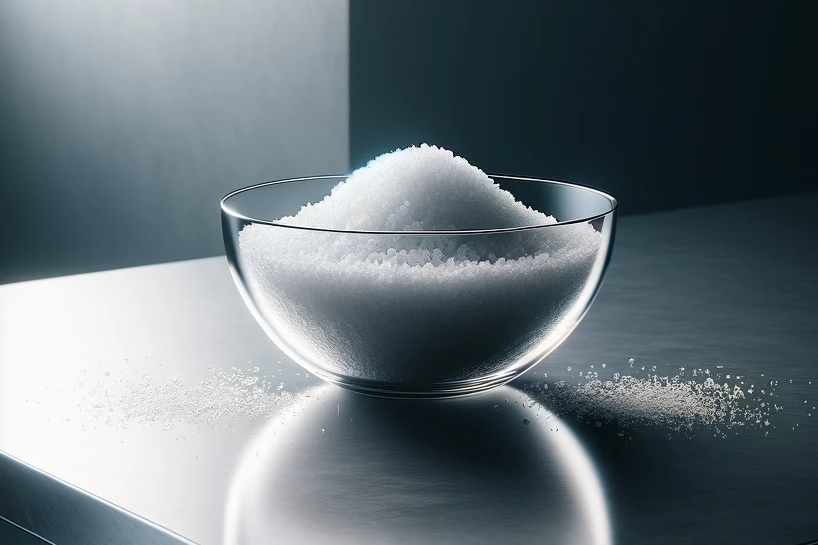Potassium hexacyanidoferrate(II)

Potassium hexacyanidoferrate(II), also known as potassium ferrocyanide or yellow blood leach salt (E536), is a chemical compound used in the food industry and other areas. It's important for dogs and their owners to understand what exactly potassium ferrocyanidoferrate(II) is, what benefits it may have, and most importantly, what potential risks it poses. The health and well-being of our four-legged friends should always be at the forefront of our minds when it comes to choosing their food and the additives it contains.
What is potassium hexacyanidoferrate(II)?
Potassium hexacyanidoferrate(II) (K4[Fe(CN)6] - 3H2O) is a complex cyanide salt that is often used in industry as an anti-caking agent or stabilizer. It prevents powdery or granular substances from clumping together by absorbing moisture. In the food industry, it is known as food additive E536. It is important to note that although potassium hexacyanidoferrate(II) contains cyanide groups, it is non-toxic in its stable form and when used properly, as the cyanide groups are tightly bound.
Advantages of potassium hexacyanidoferrate(II)
In industry
- Anti-caking agent: It effectively prevents the formation of lumps in powdered products.
- Stabilizer: It can help to maintain the quality and consistency of products over a longer period of time.
In relation to dogs
- Prevention of nutrient loss: Indirectly, it can help powdered supplements in dog food, such as vitamins and minerals, retain their effectiveness by preventing the formation of lumps.
Disadvantages of potassium hexacyanidoferrate(II)
Toxicity risk
Despite its stable form, potassium hexacyanidoferrate(II) carries a potential risk if it is decomposed or mishandled. Decomposition, for example by strong acids, can release hydrocyanic acid, a highly toxic substance.
Lack of nutritional benefits for dogs
- No nutritional benefit:Potassium hexacyanidoferrate(II) provides no direct nutritional or health benefits for dogs.
- Potential health risks: Excessive consumption or in certain chemical environments could result in the release of cyanides, which are toxic to dogs.
Better safe than sorry
The use of potassium hexacyanidoferrate(II) in dog food raises important questions about the safety and necessity of such additives. Although it is considered safe in the food industry, dog owners should be cautious and prefer products that do not contain unnecessary chemical additives. The health of our dogs is invaluable and it is important to choose a diet that not only meets their physical needs but also ensures their long-term well-being.
If you notice any signs of hypersensitivity or poisoning in your dog, you should see your vet immediately. We are not a substitute for a vet, but we try to be as accurate as possible. Every dog reacts differently and we recommend you get a second opinion or consult your vet if in doubt.
Stay healthy and take good care of your four-legged friend!😊
Similar to Potassium hexacyanidoferrate(II)
Sodium hexacyanidoferrate(II), chemically formulated as Na4[Fe(CN)6]-10H2O, is a salt of ferrocyanic acid. It is better known as Berlin blue or Prussian blue and is characterized by its intense blue...
Potassium ferrocyanide is used in the food industry as a release agent, for example for table salt or table salt substitutes. It ensures that the salt does not clump together and flows better. It is...
Sodium ferrocyanide is a chemical compound consisting of sodium, iron and cyanide. Cyanide is a highly toxic salt of hydrocyanic acid, but in sodium ferrocyanide it is very firmly bound to the iron...
Urinary stones are solid deposits of various substances that can form in the urinary tract of dogs. They can vary in size, shape and composition. The most common types of urinary stones in dogs are...



